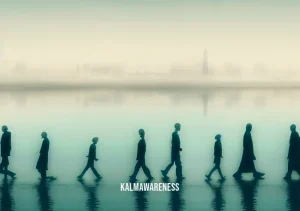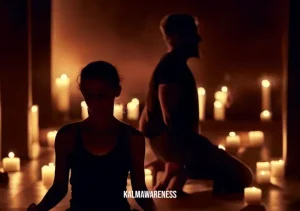The Untapped Potential of Falling Back to Sleep Meditation in Achieving Restful Nights
Tossing and turning in bed is a frustrating experience many of us can relate to. Whether it’s the stress from work, personal worries, or a restless mind, achieving a state of deep sleep often seems elusive. While you might think that sleeplessness is just an annoying yet harmless part of life, persistent sleep issues can have serious health implications. Beyond the realm of pharmaceuticals and sleep clinics, a practice is gaining ground that could offer a holistic solution to our nocturnal struggles: falling back to sleep meditation. This technique is not only beneficial for those with insomnia but is also an excellent way to improve your bedtime routine and overall well-being.
The Interconnected Web of Sleep and Relaxation
Sleep doesn’t occur in a vacuum. It is a deeply interconnected process that relates to various aspects of your life—your level of relaxation, mental well-being, and even the daily practices that constitute your bedtime routine. The modern world is full of stressors that can interrupt this delicate balance. Hence, it becomes imperative to look for a comprehensive solution that addresses these multiple factors effectively.
The Downside of Traditional Approaches to Insomnia
Traditional solutions to insomnia often involve medication, which can lead to dependency and may have side effects. Furthermore, these medications don’t necessarily address the root causes of sleeplessness, such as anxiety or a hectic lifestyle. Therefore, it’s worth exploring alternative methods that can be integrated into your lifestyle, such as mindful movement sleep exercises, to help improve both your sleep quality and general state of relaxation.
Unlocking the Power of Meditation
Meditation has been a revered practice for thousands of years, offering a plethora of mental, emotional, and physical benefits. It is more than just sitting in a quiet room; it is about achieving a state where your thoughts are not occupied by worry. From methods like EMDR meditation, which aids in processing traumatic memories, to more specialized techniques like floating meditation, there’s a wide range of options to suit different needs. This diversity makes meditation an accessible and versatile solution to a multitude of problems, including insomnia.
Breathing and Meditation: The Cornerstones of Calm
The act of breathing is something we often take for granted, but it holds the key to relaxation and tranquility. A brief meditation on breath can bring about profound changes in your mental state, making it easier to drift back into sleep. The beauty of focusing on your breath is that it can be done in any position, whether you’re sitting or lying down. Practices such as the soles of the feet meditation also incorporate breathwork to ground you in the present moment, allowing you to let go of the anxieties that prevent you from falling asleep.
Why Falling Back to Sleep Meditation is Unique
The falling back to sleep meditation combines elements of mindfulness, focused breathing, and visualization to help you slip back into a state of slumber effortlessly. Unlike some methods that may require specific postures or settings, you can engage in this type of meditation while lying in your bed. That is why it forms an excellent part of a comprehensive bedtime routine, along with other relaxation techniques like U-Relax moving or hand yoga poses.
As you embark on this journey to improve your sleep and overall mental well-being, it’s essential to explore various techniques and approaches to find what resonates with you. Falling back to sleep meditation can be a starting point, a midpoint, or even the end goal in your path to achieving restful sleep and a calmer mind.
Intrigued by the notion of meditation as a holistic solution to sleep issues? Continue reading to discover the scientific basis of falling back to sleep meditation and how it compares to other methods in the next segment.
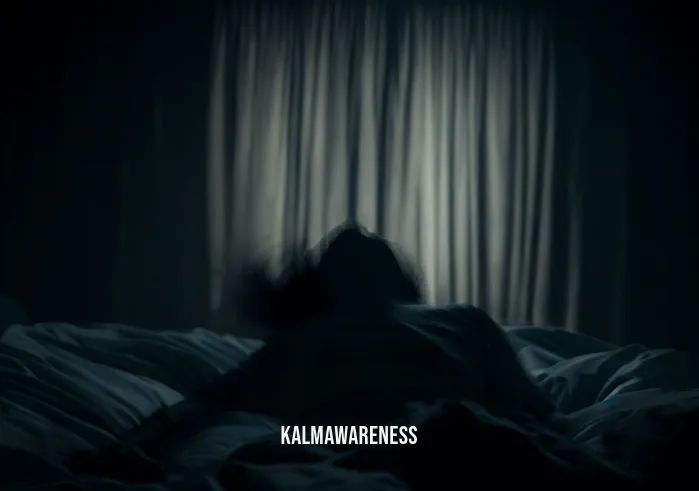
The Scientific Underpinnings of Falling Back to Sleep Meditation
Having introduced the transformative potential of falling back to sleep meditation, it’s time to delve into the nuts and bolts of this practice. Beyond the anecdotal testimonials, scientific evidence underscores the effectiveness of this technique for ensuring a better night’s sleep and elevating your overall mental wellness. In this segment, we will examine how falling back to sleep meditation works at a physiological level, compare it with other meditation practices, and showcase its unique benefits through lists and a concise table.
The Anatomy of Falling Back to Sleep: The Brain-Sleep Connection
A restless mind often leads to restless sleep. However, what happens in the brain while you try to sleep, and how does meditation help? Techniques such as falling back to sleep meditation are grounded in the science of the brain. By engaging in guided breathing or clearing energy meditation, you allow your brain to shift from a state of high alert to a more relaxed state conducive to sleep.
The Biochemical Aspect
Your body’s sleep-wake cycle is regulated by neurotransmitters and hormones like melatonin and serotonin. A well-executed meditation session can stimulate the production of these chemicals, preparing your body to embrace sleep. This is particularly beneficial for individuals grappling with insomnia or anxiety-induced sleeplessness.
Comparative Analysis: Falling Back to Sleep Meditation vs. Other Techniques
While there are various meditation techniques available, falling back to sleep meditation serves a specific need. To help you navigate your options, here’s a table that compares this method with other techniques.
| Meditation Technique | Primary Focus | Ideal For | Is Lying Down Possible? |
|---|---|---|---|
| Falling Back to Sleep Meditation | Encouraging sleep through mindfulness | Insomnia, restless sleepers | Yes |
| Anxiety Attack Meditation | Managing acute anxiety | Anxiety sufferers | Yes, but sitting preferred |
| Hand Yoga Poses | Physical relaxation through hand postures | Stress, muscle tension | No |
| Binaural Beats for Migraine | Alleviating headaches through sound waves | Migraine sufferers | Yes |
| Kid Calm | Children’s mindfulness | Children with sleep or focus issues | No |
Key Benefits of Falling Back to Sleep Meditation
- Convenience: Unlike methods like flight rising meditation, which may require specific postures or breathing patterns, falling back to sleep meditation can be performed lying down in your bed.
- Versatility: This method is not limited to insomniacs but can benefit anyone looking to enhance their sleep quality.
- Ease of Incorporation: Can be easily integrated into your existing bedtime routine or relaxation practices.
- No Side Effects: A natural method without the adverse effects associated with sleep medication.
The Practical Application
A guide to Meditation for Dummies can offer a good starting point. However, the beauty of falling back to sleep meditation lies in its simplicity. A few minutes of focused breathing, gentle mental imagery, and perhaps a touch of 256 Hz benefits for sound therapy can go a long way.
Leading into the Next Realm of Exploration
As we’ve unraveled the scientific and practical aspects of falling back to sleep meditation, the next logical step is to guide you through the actual techniques and best practices. Interested in transforming your restless nights into peaceful slumber? Continue reading in the next segment, where we’ll walk you through a step-by-step guide to falling back to sleep meditation, complete with real-world examples and expert tips.
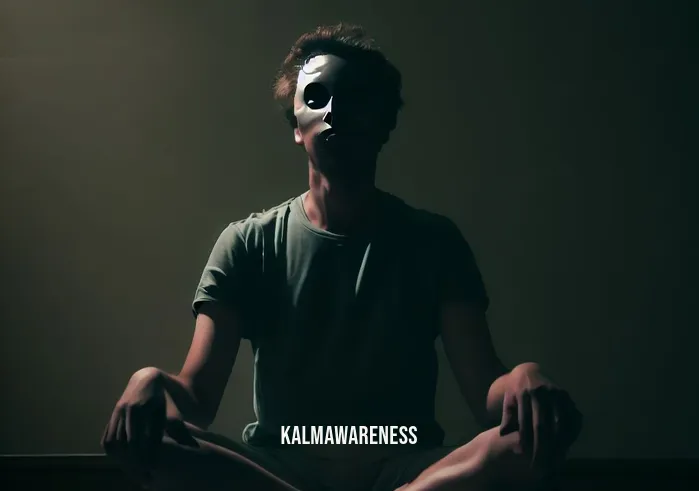
The Transformative Power of Hope in Falling Back to Sleep Meditation
After understanding the science behind falling back to sleep meditation and how it compares with other methods, the next crucial aspect to explore is the emotional and inspirational dimension of this practice. The quest for a good night’s sleep is often laden with emotional stress, frustration, and desperation. These negative emotions can create a vicious cycle, making it even harder to attain that elusive rest. Through inspirational quotes and real-life experiences, let’s discover how the act of finding restorative sleep isn’t just a physical endeavor but also an emotional journey toward hope and well-being.
A Journey from Desperation to Hope
As sleepless nights accumulate, it’s easy to lose faith and resign oneself to a life dominated by tiredness and irritability. However, falling back to sleep meditation—or sleep-inducing mindfulness—offers a beacon of hope. It’s not just a method; it’s a lifestyle adjustment that signifies a shift from despair to hope.
“Hope is being able to see that there is light despite all of the darkness.” – Desmond Tutu
Falling back to sleep meditation serves as that “light” in the darkness of insomnia and restless nights. And once you see that light, you’re already on your way to a solution.
The Transformative Power of Mindfulness
The practice of mindfulness, as detailed in The Mindfulness Prescription for Adult ADHD, extends well beyond the confines of attention disorders. It represents a comprehensive approach to mental wellness, one that can be a game-changer when applied to the challenges of sleeplessness.
“The future depends on what you do today.” – Mahatma Gandhi
While Gandhi may not have been talking specifically about sleep, his words resonate strongly with the proactive approach that falling back to sleep meditation encourages. By taking action today, you lay the groundwork for countless peaceful nights ahead.
Beyond Sleep: A Renewed Sense of Self
You’ll find that the positive effects of sleep replenishment meditation are not confined to the night but spill over into your waking life. With a well-rested mind, your days are more productive, your mood is uplifted, and you are better equipped to tackle life’s challenges. This holistic transformation serves as a testament to the power of good sleep and effective meditation techniques.
“Rest when you’re weary. Refresh and renew yourself, your body, your mind, your spirit. Then get back to work.” – Ralph Marston
Inspiration Through Sound and Movement
Sound therapy, which employs 256 Hz benefits, and mindful movement for sleep both serve as complementary techniques to falling back to sleep meditation. These methods help create an ambient atmosphere, setting the stage for effective mindfulness practices.
“You are never too old to set another goal or to dream a new dream.” – C.S. Lewis
It’s never too late to make the lifestyle changes that falling back to sleep meditation demands. You’re setting a new goal for restfulness, a new dream for peace of mind, and creating a version of yourself that thrives both during the day and through the night.
Gearing Up for a Life-Changing Transformation
If you’ve come this far, you’ve already taken the most crucial steps on the path toward a more restful, fulfilling life. But how does one go about actually implementing these meditation techniques? What are the pitfalls to avoid, and how can you adapt these methods to meet your unique needs?
Intrigued? Continue reading in the next segment for a step-by-step guide that will walk you through the process of falling back to sleep meditation. This guide will be your roadmap, armed with tips and tricks, to help you transition from restless nights to a rejuvenated life.

The Practicalities of Falling Back to Sleep Meditation: A Comprehensive Breakdown
By now, you’ve journeyed through the scientific, emotional, and inspirational facets of falling back to sleep meditation. You’re likely excited to dig deeper into the practical aspects of this transformational practice. In this segment, we’ll dissect the key components of falling back to sleep meditation and explore the various techniques that make it such an effective tool for restorative sleep. A detailed breakdown ensures that you are well-equipped to implement this mindfulness-based sleep intervention in your daily life.
The Anatomy of Sleep-Inducing Mindfulness
As we know, sleep meditation isn’t just about shutting your eyes and hoping for the best. It’s a nuanced practice with layers that, when understood fully, can make a significant difference in your quality of sleep. So, let’s break it down:
The Core Components
- Intentional Breathing: Also known as mind-breaths, this involves focusing solely on your breath, making you aware of each inhalation and exhalation.
- Body Scan: Mentally scanning your body from head to toe helps identify tension areas.
- Visualization: Create a calming mental scene to distract your mind from stressors.
- Affirmations: Positive affirmations rewire the subconscious mind and prepare it for rest.
The External Aids
- Music or Sounds: Binaural beats, detailed in binaural beats for migraine, can provide an ambient background conducive to meditation.
- Essential Oils: Aromatic oils like lavender can complement your meditation by calming the senses.
- Bedding and Clothing: The texture and material of what you wear and lay on should add comfort, not distractions.
Positioning for Success
There’s an ongoing debate about whether you can effectively meditate while lying down. The answer is: Yes, you can! However, it would help if you were mindful of the posture to avoid straining your body, which defeats the purpose. Check out can u meditate lying down for insights.
Achieving Calm Through Guided Practices
Guided meditation offers a structured approach to achieving a tranquil state. This anxiety attack meditation serves as an excellent example, though it’s focused on anxiety management. The same principle can be applied to sleep-focused meditation, guiding you through each step, ensuring you don’t get lost or overwhelmed by your thoughts.
Unique Twists to Traditional Approaches
Sleep meditation can also be adapted to suit different preferences. For instance, floating meditation offers an innovative twist by introducing the sensation of weightlessness, while hand yoga, showcased in hand yoga poses, merges meditation with physical relaxation techniques.
The Final Frontier: Mastering the Art of Falling Back to Sleep Meditation
You’ve journeyed through the complexities, intricacies, and innovations in the world of falling back to sleep meditation. Now, as you stand on the precipice of mastering this life-changing art, one might wonder: What’s next?
In the concluding segment of this series, we’ll tie all the threads together, summarizing the key takeaways and presenting a final, actionable plan that you can start implementing tonight. Don’t miss this final chapter, which promises to be the capstone to your transformational journey towards restorative, peaceful sleep.
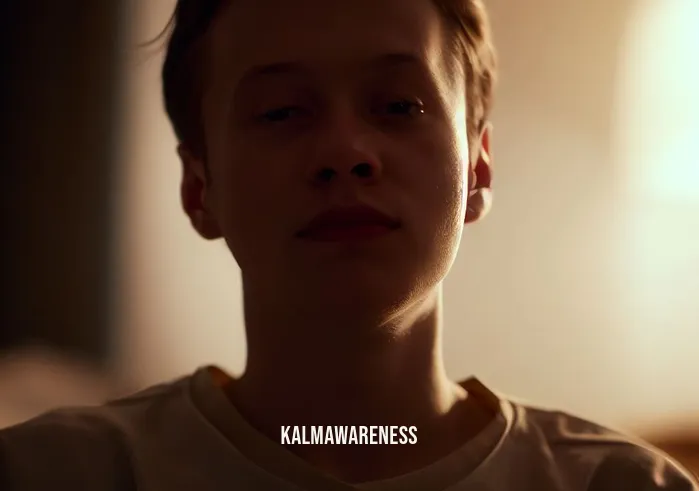
Your Journey Toward Restful Nights: A Final Word on Falling Back to Sleep Meditation
Congratulations on completing this comprehensive exploration of falling back to sleep meditation. Through various chapters, we’ve dissected the science, inspiration, and techniques behind this effective approach to combat sleeplessness and anxiety. As we arrive at our final stop, let’s wrap things up with a lighthearted and optimistic outlook.
Bringing It All Together
Throughout our journey, we’ve covered a myriad of topics, from the psychology behind mindful movement for sleep, to the calming techniques of EMDR meditation, and even the specialized approaches like soles of the feet meditation. Each segment was a building block, creating a holistic understanding of the various methods you can use to re-enter the realm of slumber.
The Gift of Calm
You now have in your hands the power to transform your nights, and by extension, your days. Understanding that a peaceful sleep contributes to a tranquil life is the first step. Remember, if the everyday stressors get too overwhelming, meditation, especially the kind that involves attaining a peaceful state of mind, can be a savior.
Sharing the Love
Children too can reap the benefits of meditation. The practice is not confined to any age group. If you’re a parent, explore our Kid Calm section to help the little ones find their oasis of serenity.
Your Next Steps
As you take forward this newfound knowledge, don’t hesitate to revisit the earlier chapters to brush up on specific techniques or deepen your understanding. Each re-read will only enrich your experience and strengthen your sleep meditation practice. And while you’re at it, why not dive into our Meditation for Dummies section? Who knows, you might discover another nugget of wisdom.
A Big Thank You!
Your presence in this explorative journey has been invaluable. We appreciate your curiosity and commend your initiative to enhance your sleep quality. Keep an eye out for future editions; we promise to bring you even more compelling and insightful content to help you live your best life.
Your Call to Action
Your journey need not end here. With countless layers yet to uncover in the realms of Relaxation and Clearing Energy Meditation, our magazine offers a trove of resources that await your discovery. Embark on your next adventure with us!
Feel invigorated? We hope so. As we close this chapter, we’re filled with anticipation for the endless possibilities that lie ahead for you. Take this wisdom, spread your wings, and soar into a future of restful nights and peaceful days. Here’s to falling back to sleep, effortlessly.




